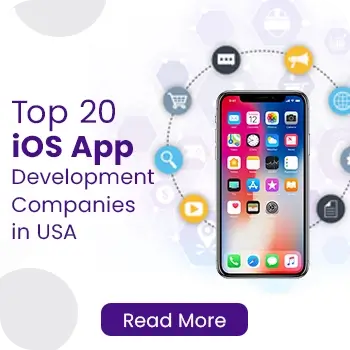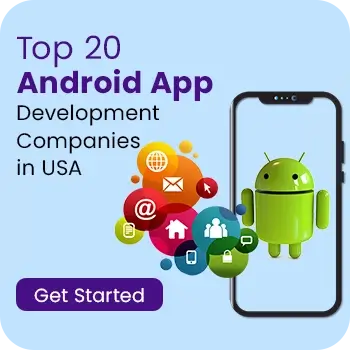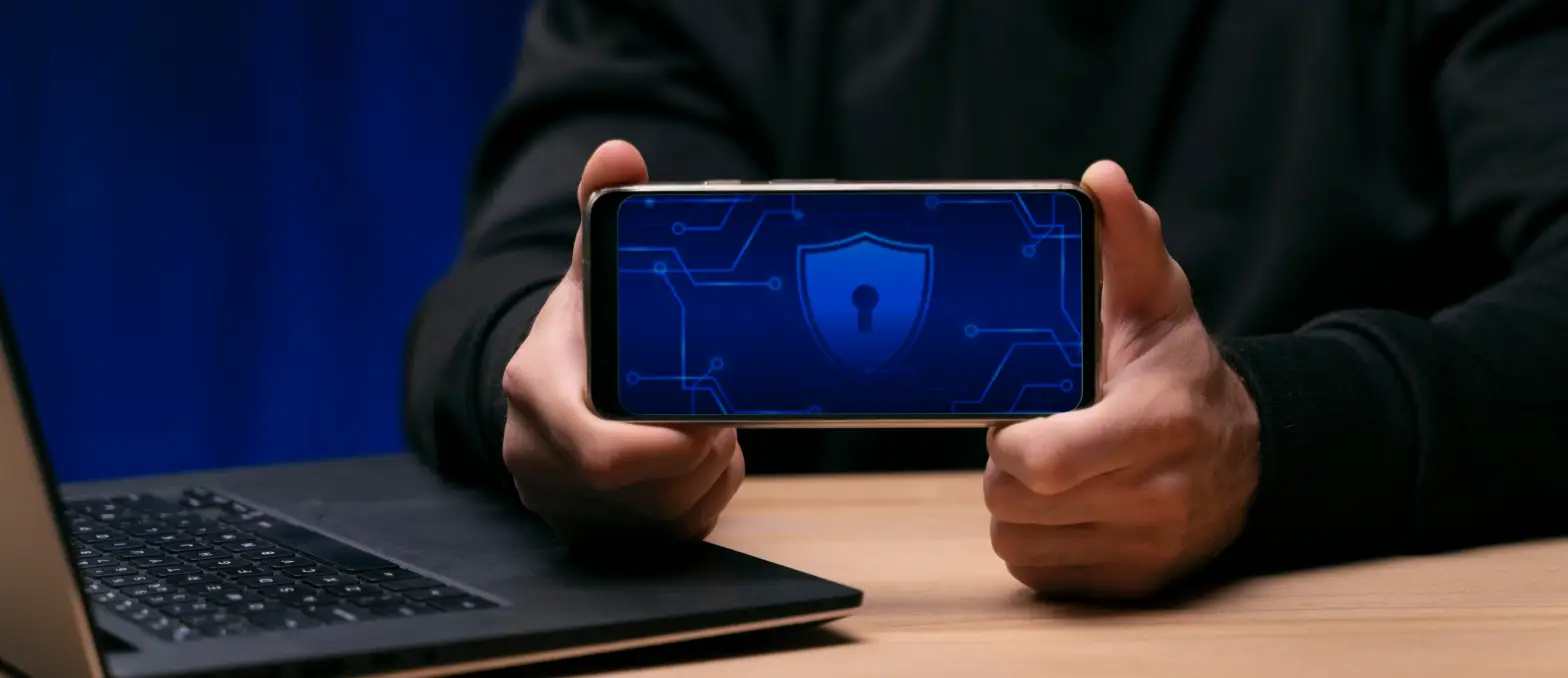Table of Contents
Apple recently unveiled new iPhone models for 2023. In addition, there’s now another update available to all iPhone models from iPhone XR onward: iOS 17. This major software release became available across hundreds of millions of iPhones on September 18th 2023.
iOS 17 introduces new features including contact posters, NameDrop, StandBy, Live Voicemail and FaceTime video voicemail. As well as a brand-new Siri voice recognition model comes along. Huge improvements to autocorrect and dictation functions and much more also make things better. This is why the demand for iOS app development companies is getting higher with every passing day
Imagine owning an iPhone without spending a single penny! In this article, we cover everything you need to know about iOS 17 and Android 13. This includes all its features and any issues, the current version and what may come next as updates roll out. If you are considering whether Android 13 or iOS 17 would best meet your needs then rest assured. We are here to provide all of the crucial information about each platform to assist in making an informed decision. Let’s dive deep!
iOS 17: Synopsis
Apple launched an extensive beta program following WWDC when unveiling iOS 17 details. Testing of that full version has begun publicly since then. For now, however, testing of Release Candidate still stands. Apple may begin development work soon on an updated version titled iOS 17.1. This is to address any early bugs or problems discovered with its initial version of iOS 17.
It is important to know how testers who wish to switch back from optimization beta iOS 17 can switch back after testing is finished. This is done in order to access its full features. If you desire to know more about the same, you can connect with the best iOS app development company experts.
Apple confirmed a bug of overheating in iOS 15, and promised an iOS 17 update would fix it. Some third-party applications had also been overburdening A17 Pro chips with excessive strain. This leads to heat dissipation issues – specifically Instagram, Uber and more. It impacts performance significantly. Apple is working closely with app developers on optimizing these problematic applications. They are simultaneously issuing updates to address iOS 17 issues as well.
Apple clarified to MacRumors that customers experiencing temperature issues with the iPhone 15 Pro could see these resolved through an update.
iOS 17.0.3 and iPadOS 17.0.3 updates also address a kernel vulnerability. This allows an attacker to gain elevated privileges, an issue Apple claims was exploited prior to iOS 16.6.
iOS 17: Challenges That Comes Along
Below are the challenges that can come along as per the experts providing iPhone app development services:
Wi-Fi connectivity: After updating to iOS 11, some people experience difficulty staying connected to Wi-Fi networks on their iPhone. Restarting is likely necessary here if this occurs. Or consider this article on How to Prevent an iPhone From Losing Wi-Fi Connection for further insight.
Slowdowns, battery life: After updating iOS, some people report that their iPhone becomes slower or that its battery drains quickly or that their phone feels warm. This may be caused by background tasks associated with updating, such as indexing. These background tasks could use up more battery and cause your phone to become warmer as a result – restarting may help.
iOS 17 Update Addressing Security Issues Apple released an iOS 17 update on September 21 to address some potential security vulnerabilities.
iOS 17: Tips to install iOS 17
Installation of iOS 17 couldn’t be any simpler. Simply follow these steps as suggested by the experts of iOS app development companies in USA:
- Launch the Settings application.
- Tap General settings.
- Then “Apply Changes.
On this screen you will be shown which version of iOS you currently have installed and, if new updates become available for installation. They may either state “Install Now”, indicating they were downloaded but yet applied, or “Download and Install”, in case it has yet to download completely.
Simply follow the instructions there to upgrade to iOS 17. Reagreeing with terms and conditions might be required. Then download, verify, and apply will begin. When complete your iPhone will reboot with some welcome screens that introduce its features.
Here, we offer more details on installing iOS 17 on an iPhone, as well as solutions to any potential problems, here: How to Upgrade to iOS 17.
If you install an update and then want to roll back, there is only a limited window of opportunity in which to make this change – read: How to downgrade iOS for more details.
iOS 17: Where You Can Run This Platform
iOS 17 will not support iPhone 8, 8 Plus or the iPhone X as they all can still run iOS 16. They should receive security updates at least for another year though. Below is a list of iPhone models which support some but not all new features in iOS 17:
- All iPhone 15 devices
- All iPhone 14 devices
- All iPhone 13 devices
- All iPhone 12 devices
- All iPhone 11 devices
- All iPhone XS devices
- iPhone XR
- All iPhone SE devices
Even if your device receives another year of software support, keep in mind that older iPhones might not benefit fully from new features – in 2022 for instance the iPhone 8 and X missed out due to having older processors. For more information, explore every iOS release so far and determine the version your phone supports
iOS 17: The Features It Brings Into Play
iOS 16 brought with it many innovative new features, like an updated Lock Screen design, unsending of iMessages and the introduction of an iCloud Shared Photo Library. So what will we find new in iOS 17? Initial reports predicted fewer major changes this time round but at WWDC 2023 Apple revealed numerous exciting additions. We detail them below or see our comparison between iOS 16 vs 17 for an overview.
Not all the new features were available at launch. At least five iOS 17 features, including AirDrop over the Internet, Journal app features, collaborative Apple Music playlists, AirPlay in hotel rooms and NameDrop to Apple Watch will arrive “later this year” via software update.
StandBy
StandBy brings Apple Watch-esque convenience into any nightstand. Place the phone landscape-wise onto a stand at night to see time with an array of clock styles. This can be as clock faces, scroll through your photos, display widgets, monitor live activities like game scores. You can choose Night Mode to display red text at night to reduce eye strain. Night Mode also helps minimize night-time eye strain similar to alarm clocks!
Journal
Journal is an exciting new app from Memories in Photos that gives users a way to relieve special moments, recall experiences with text, location information and photos, write narratives about those memories or write new ones about experiences based on text input by an external app developer, as well as using its Suggestions API in their apps.
Live Voicemail
When someone calls and leaves a message for you, a transcript will show live as they speak allowing you to evaluate if picking up is worth your while.
Contact Posters
Contact Posters will allow you to customize how you appear during calls and on contact cards that show up for friends in Contacts. Easily personalize it by uploading images, fonts and colors. Call Kit supports it so it can even be used within third-party VOIP apps!
FaceTime
Apple will now enable FaceTime users to leave video messages when people don’t answer, as well as taking calls using Apple TV.
Phone Calls
Apple is making some adjustments to the Phone app, including replacing its Contacts button with one called Incoming Calls and moving in-call buttons around. Following some initial outrage over these modifications, it now seems as if end calls will return to being shown in their original position as of mid August.
Android 13: All You Need To Know About
Android 13 was officially unveiled to us back in February 2022 when Google provided its first developer preview. We saw our first glimpse at it through public beta releases starting May 2022. Continuing up until its stable launch date of August 2022. After its initial public launch of May 2022 we saw minor adjustments being made prior to its official roll out on Pixel phones worldwide. Finally, being available publicly via beta firmware updates in August.
As is traditionally the case, Google rolled out their latest release of Android on Pixel phones first this year. However, some older phones such as those older than Pixel 4a were left behind without further Android version upgrades. Receiving updates until October 2022 or August 2023 depending on when their updates expire.
As Android 13’s initial developer preview was made available back in February. We expected it to debut earlier than other recent Android releases. Indeed, its official launch came down the pipeline on August 15, 2022!
To know more you can always connect with the experts of android application development company.
Android 13: Features It Brings Into Play
Google typically releases security patches and Pixel Feature Drops on the first day of every month. However, in recent times they have breached this unwritten rule and released June’s Pixel Feature Drop on June 13th 2023 – one week later than planned! With it came many updates which previously surfaced within Android 14 Beta 3 or 13 QPR beta releases.
Google Assistant makes road safety much more attainable through emergency sharing via their service and improved road safety for everyone on the roads. Below are the aspects that come along this platform as per experts of Android app development companies in USA.
Emergency Sharing via Google Assistant
With Google Assistant’s June Feature Drop, emergency sharing sessions can now be initiated via Google Assistant. Emergency sharing is a Pixel feature you can activate if you feel unsafe while running at night, such as during an out-and-back. When activated using voice command through Google Assistant, simply say, ‘Hey Google, start an emergency sharing session for x minutes.” To use emergency sharing via voice, activate it from Google Home by saying something like, ‘Hey Google, start an emergency sharing session.”
Google Pixel phones already detect severe car accidents and automatically call emergency services. Through its June Feature Drop it will also share your location and call status with emergency contacts in an effort to increase road safety.
Camera Improvements
In June’s Feature Drop update, Google Pixel 6 and newer smartphones now support gesture-controlled timers that make taking photos with an inbuilt timer much smoother. Simply raise your palm to trigger its countdown feature when taking selfies! This makes hands-free selfies much simpler as users don’t need to worry about timing out too early and waiting. This also enables more seamless hands-free selfies as users don’t have to be perfectly in place all at once!
Google Pixel 7 Pro also excels at macro video recordings. Like its photos counterpart, its ultrawide camera’s ultra-close focus can now produce crisp footage at close distance – something not available to its predecessor Pixel 6 Pro which was capable of macro photography but not enabled for this purpose by Google.
New Wallpaper Tools
At its developer conference, Google I/O, the company announced it will introduce cinematic wallpapers featuring 3D effects as well as customizable emoji backgrounds that allow for customization with patterns or images of your choosing. Both these options will become available starting June Feature Drop.
Emoji wallpapers can be created through the Wallpaper & style shortcut on your homescreen by long-pressing on an empty space and accessing its Wallpaper & style feature. From there you can pick any combination of emoji characters you desire. There is also an assortment of patterns in various sizes so that your experience may be customized. In addition there are background colors to select and animation features which animate whenever tapping or unlocking is performed. When set as your background they animate when tapping or unlocking and briefly switch over into lightning bolts when connected – yet these animations can be turned off or stopped when setting an emoji wallpaper as background. Additionally you can save and edit different emoji wallpapers as needed!
What’s new in Android 13?
Google began rolling out more frequent updates to Android mid-cycle, starting with version 13 – Quarterly Platform Releases or QPR for short – this year, including Android 13. These Quarterly Platform Releases bring some key new features targeted primarily towards their Pixel phones lineup. If you want a deeper dive, check out our ongoing Feature Drop list, but here is our quick rundown. Below we provide you the list as per the experts providing Android app development services.
Magic Eraser: Google has made its impressive Magic Eraser repair tool free on all of their Pixel smartphones. Previously only part of Google One subscription plans. Subscribers can utilize Magic Eraser across devices including iPhone.
Night Sight: An exclusive Pixel feature has made its way onto Google’s 2021 flagships: Night photography mode is faster and improved thanks to an optimized algorithm. Unfortunately this won’t reach other phones just yet.
Direct My Call updates: All Pixel phones now provide call menu options even before a robot finishes displaying all available ones – available to select toll-free numbers within the U.S.
See Timers from Smart Speakers: Google has long been testing a feature they now officially introduced as part of March Feature Drop: you’ll now be able to see any timers you set on smart speakers directly on both the homescreen and lockscreen of your Pixel smartphone!
Multiple eSIMS: Google introduced support for dual eSIM usage simultaneously on Pixel 7 and 7 Pro devices, new emoji kitchen combinations and UWB digital car key support via UWB for digital car keys on these two models.
Health Connect: Health Connect has now become part of Google Pixel phones by default, making it simpler and safer for fitness app providers to securely and privately sync data across services with you on your device.
Android 13: Challenges That Came Along
These features may not appear on Android smartphones in the near future, but could become part of future Android releases. Below are the challenges that comes along as per the experts at custom mobile app development company services providers.
Tap-to-Transfer
One feature missing from Android 13’s stable release is tap-to-transfer, intended as similar functionality as Android Beam which lets users tap two phones together to exchange links, files, and more with each other. In Android 13, tap-to-transfer was intended as media sharing so you could tap smart speakers like Amazon Alexa to access media stored on them from within your phone.
Multi-user Support
Google has renewed its focus on tablets since releasing Android 12L, even post-official launch of 12L. In Android 13 previews, numerous changes to multi-user profiles were spotted. Unfortunately they don’t seem to make it. From revamped profile picker screens for tablets to vibrant icons for your avatar – plenty would have been exciting here if they made it in production mode! Hub mode seemed set to make sharing mobile apps between profiles easy while guest accounts would receive a list of available applications at sign in. Plus there was the addition of kids mode with an old school navigation bar!
At this stage, all these puzzle pieces may add up to something bigger – possibly preparations for Android 14. We must wait and see how these developments play out before reaching a definitive verdict on them all.
Get Android 13 On Your Phone Now!
At this point, Android 13 should have arrived on most modern phones. Even those that don’t own Pixel phones – at this time. If you own one and would like to stay at the forefront, consider enrolling in the Android 14 beta program. It offers previews of new quarterly feature drops even after stability has been reached. Google Pixel 7 series would still be your ideal pick if this option interests you.
Android 14- The New Arrival
On September 21st 2023, Google unveiled Android 14 QPR1, marking what is hopefully the final step toward its stable Android 14 release. Pixel owners can install this beta today using our installation guide. Those with handsets from other brands must wait for OEM-specific releases of Android 14. However, we now know what features and tweaks we should anticipate with Android 14. Here’s a glimpse at all that’s new in Android 14 as well as all its best features worth knowing so far.
Prior to Android 10, Google would name their versions after sweet treats such as Nougat, Oreo and Pie – this included versions 7, 8, 9 Nougat Oreo Pie etc. Now though Google simply refers to each version number by its full name so Android 14 simply goes by that moniker but internally Google still refers to its various dessert names with Upside Down Cake being one such name internally for it!
Looking back, Android 13 was released in August 2022. Android 12 arrived October 2021. And Android 11 made an appearance September 2020. No official word has yet been issued regarding an exact release date of Android 14. However, its Platform Stability reached in June and Google informed developers they’d have several weeks from then until its stable rollout begins – expectedly this would coincide with Pixel 8 series launch event later that month.
What’s New in Android 14
Android 13 was an underwhelming release, in terms of features. Google only highlighted several. Members of the Android community have discovered several noteworthy Android 14 features worth noting.
Google has updated Android 14 with changes to the share sheet that should make moving files around more straightforward and user-friendly.
Below are the features that can make a difference in this platform as per custom mobile app development services providers. Check it out:
Guest Phone App Access
If you have created a guest user profile on your device, granting them access to your mobile app can allow them to see call history as well as make calls themselves. Perfect if someone needs your handset!
Health Connect App
Last year, Google and Samsung collaborated to develop the Health Connect app, an all-in-one hub designed to store users’ health data securely before synching it with other applications. While currently in beta form and available separately to download separately from Android 14 when released – could this finally provide Android with its own viable alternative to Apple Health?
App Cloning
Android 14 should bring support for native app cloning, enabling two instances of one application running at once on your phone and providing dual login support. This functionality enables multiple accounts to remain logged into simultaneously without disrupting app performance.
Secondary Administrator Users
For devices used by multiple members in your household, such as tablets, it may be beneficial to give secondary users admin-level privileges on those devices. This might come in particularly useful.
Predictive Back Gesture
Android 14 introduces the predictive back gesture, showing part of the window you will return to as you swipe backward. Android 14 makes going back a lot simpler if you pause when swiping. By popping the page you need up on its side bar. In case you get lost during your travels! Like your active apps list, when enabled this feature allows for quicker app switching by simply swiping upward and pausing or tapping the three lines button. Unfortunately, developers still control when this feature is turned on per activity so its appearance may depend on which app and what activity is taking place within it. Also when using swipe gestures for intuitive navigation there’s more visibility of back arrow and more prominent back arrow for improved intuitive navigation – Here is how you can enable this yourself.
How to Get Android 13?
Android 14 will mark an unprecedented assault against carrier and manufacturer pre-installed bloatware by featuring a background apps installation page where you can see everything downloaded without your knowledge and then delete them all at the click of a button.
Other Android phone manufacturers have allowed for this for some time now. We’re glad that Google is considering doing the same thing. Although bear in mind it might take longer for it to reach full maturity than others have before being fully implemented into Android devices.
New Game Controller Support Available
Android 14 will feature support for PlayStation DualSense Edge and SteelSeries Stratus Plus controllers if you are serious about Android gaming, which with Snapdragon 8 Gen 2, should certainly be possible! These high-end peripherals will soon become accessible.
Book 30 Minutes Free Consultations with A3logics Experts to Start Your App Journey Today!
Final Thoughts
Hopefully you are clear about the differences between Android 13 and iOS 17. Now as per your feature needs and requirements, you can further make your decision. We have also notified about the newly added member in the Android family. Its 14 version is also going to be a game changer. So, you can make your decision accordingly and move in that direction. To know more you can always connect with A3logics. You get experts from one of the best app development companies at your service. Good luck!
FAQs
Which one should one consider iOS 17 or Android 13?
It completely depends on your choice of needs. You just need to check with the features and make your decision accordingly. To know more, you can always connect with the experts of mobile app development companies in USA.
Is it worth investing in iOS 17 with Android 14 knocking the doors?
With Android 14 knocking, it does become an exciting aspect to consider. But, it completely depends on the kind of features you are looking to have.
Which platform is more user-friendly?
Both the platforms are user-friendly. You just need to check where you are comfortable with so that you can proceed ahead accordingly.
When does iOS 17 come out?
The release date for iOS 17 is September 2023.
How to get iOS 17 beta?
To get iOS 17 beta, you can sign up for the Apple Beta Software Program on the Apple website.
When will iOS 17 release?
iOS 17 will be released for public sale on September 20,2023.
What’s new in iOS 17 beta 4?
iOS 17 Update addresses security issues. Apple released an iOS 17 update in September to address some potential security vulnerabilities.
When is iOS 17 available?
iOS 17 available is available for usage from September 2023
How to download iOS 17 beta?
To download iOS 17 beta, you can sign up for the Apple Beta Software Program on the Apple website.
How to install iOS 17?
The installation process for iOS 17 will be similar to previous iOS updates, through the Settings app or iTunes.
How to get Android 13?
Open your device’s Settings app. Tap System. System update. You’ll find your update status.
When will Android 13 be released?
It was released to the public and the Android Open Source Project (AOSP) on August 15, 2022.
How to update to Android 13?
Launch the Settings app of your device, navigate to System, System update and locate its status.
What is Android 13 called?
It is also acknowledged as Tiramisu.








